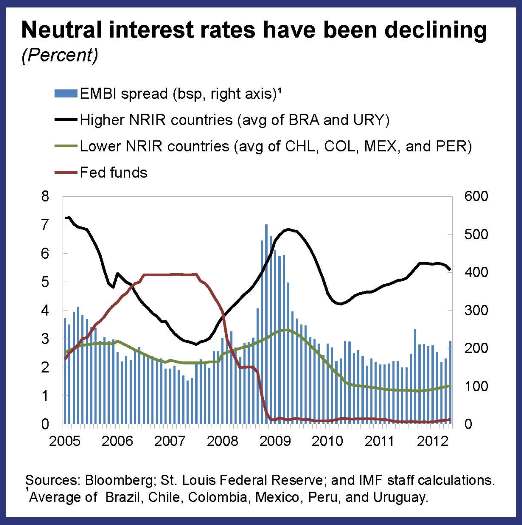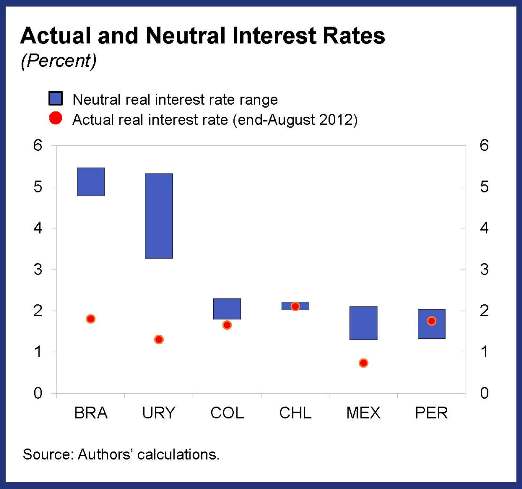(Version in Español)
Many Latin American countries have strengthened their monetary policy frameworks in recent years to keep the rate of inflation in check. Some of them have adopted an inflation target and use the policy interest rate as the main tool to achieve that target.
But how do central bankers know whether monetary policy is expansionary or contractionary? Policymakers would need to know how the current policy rate compares to a benchmark or neutral rate.
The neutral interest rate is the real interest rate consistent with the economy operating at full employment and stable inflation. If the economy is operating above its potential capacity and inflation is rising, policymakers should increase the policy interest rate above the neutral level to cool down the economy. Conversely, if the economy is operating below its full employment level, interest rates may need to be lowered below the neutral level.
Estimating neutral rates
In our study, we estimate neutral interest rates for 10 Latin American countries (see also our Working Paper). The neutral rate cannot be observed and there is no single best method to estimate it. Therefore, we use several different methodologies, and obtain a range of plausible values for the neutral rate for each country.
Our sample includes countries that have a full-fledged inflation targeting regime (Brazil, Chile, Colombia, Mexico, Peru, and Uruguay) or have recently transitioned to it (Costa Rica, the Dominican Republic, Guatemala, and Paraguay).
We find that financially developed economies with a longer history of inflation targeting typically have lower neutral interest rates. These countries tend to have stronger economic fundamentals (for example, lower inflation uncertainty and sovereign risk premiums measured by JP Morgan’s Emerging Market Bond Index (EMBI) spreads). A puzzling notable exception is Brazil, where the neutral rate is among the highest in emerging economies.
We also find that stronger economic fundamentals and the easing of global financial conditions (reflected in lower federal funds rates) have also resulted in a downward trend in the neutral interest rates, with the recent exception of Brazil and Uruguay.
Comparing actual and neutral rates
Using our estimated neutral interest rates we find that current policy rates are close to their neutral level in several countries (Chile, Colombia, and Peru). For Brazil and Mexico we find that monetary policies remain stimulative (with actual interest rates below neutral).
For other countries in the region our analysis suggests that Costa Rica, the Dominican Republic, Guatemala, Paraguay, and Uruguay have lower interest rates than their neutral level. However, these results should be viewed with caution given data limitations and weaker monetary policy transmissions.
Taking monetary policy decisions is a very challenging task owing to the many unknowns (such as the position of the economy in the business cycle and likely future economic shocks). It is even more challenging today given the volatile external environment. Reliable estimates of country-specific neutral rates can help central bankers in Latin America set the course for monetary policy.

